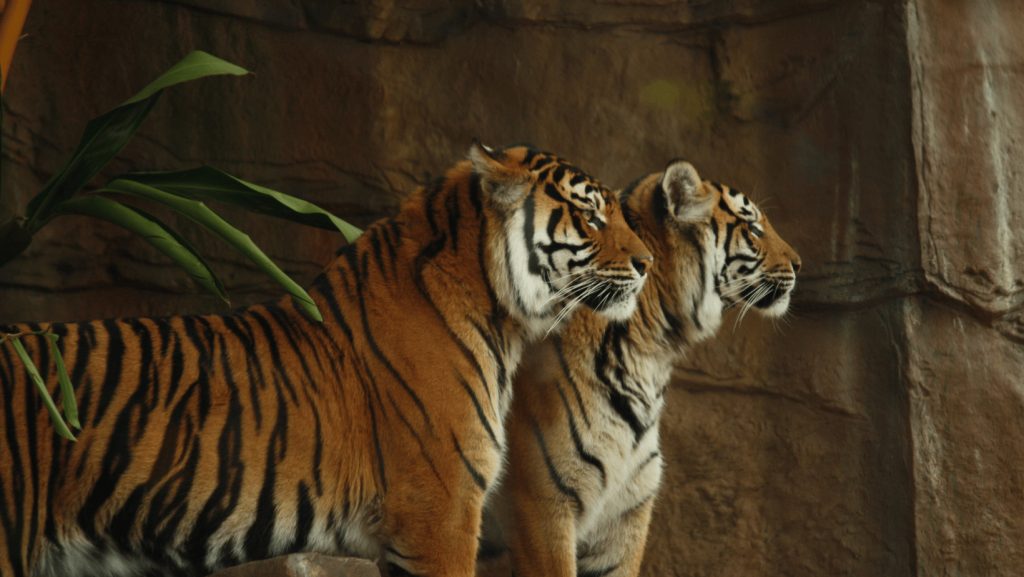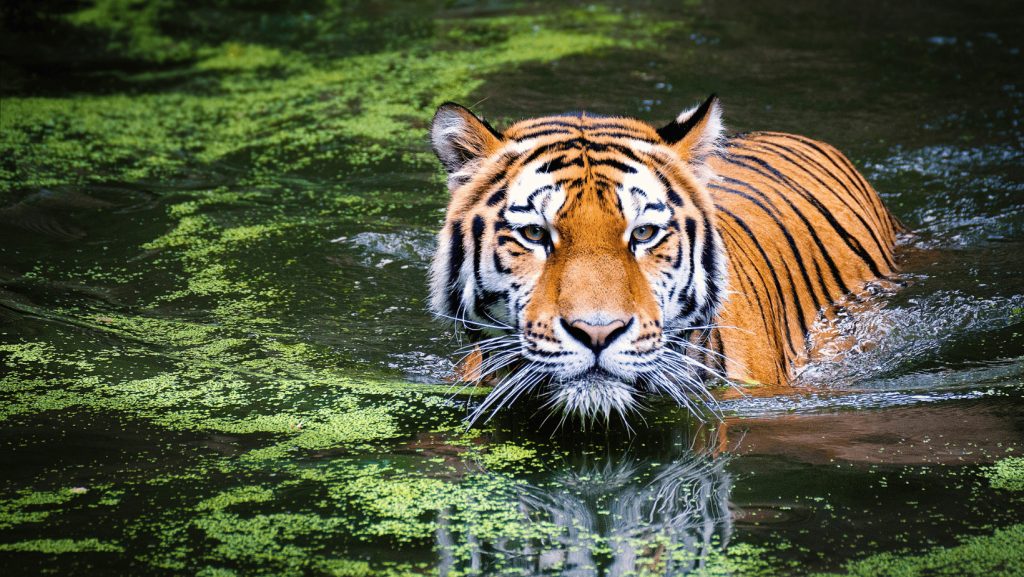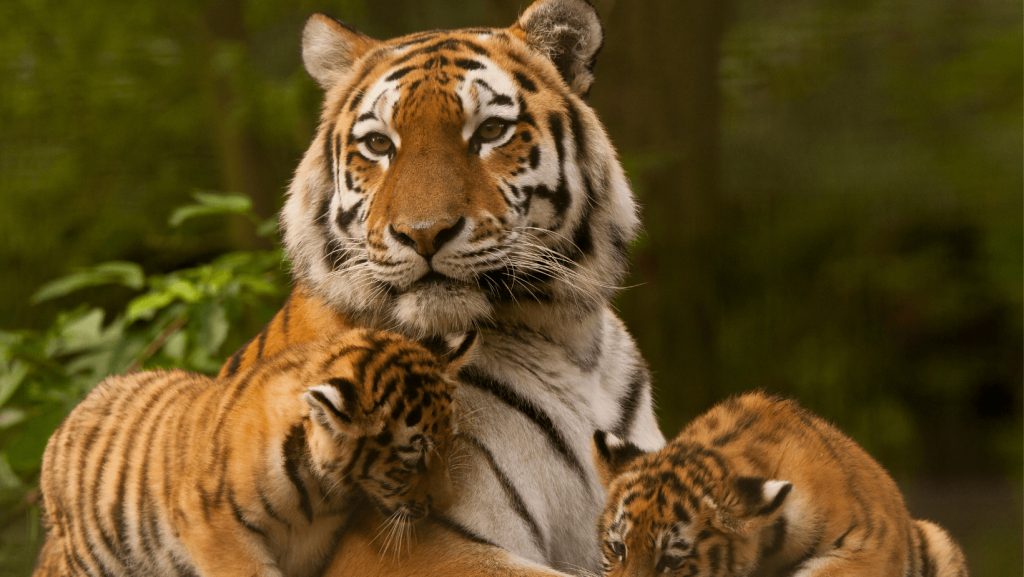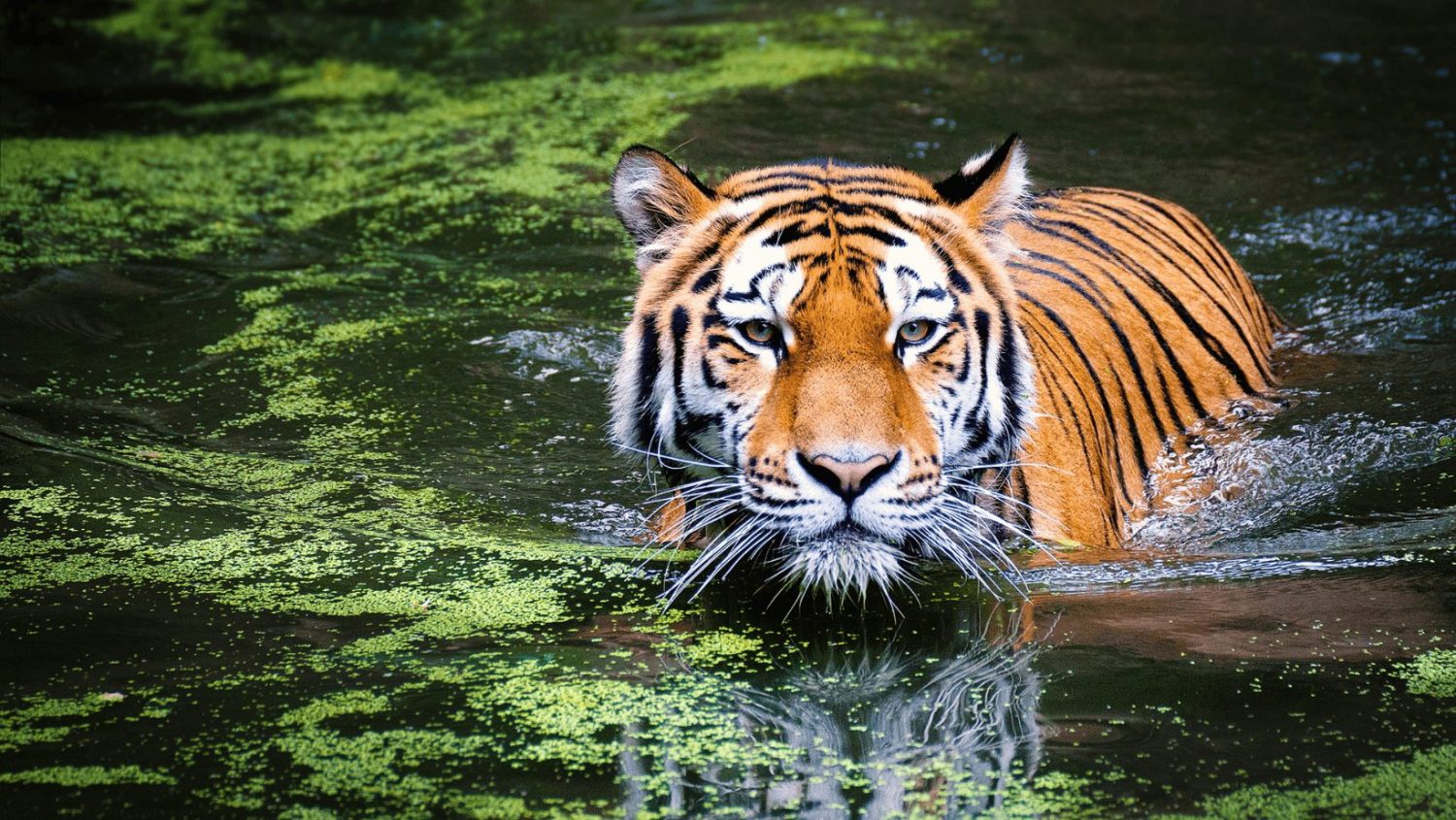
Tiger Basics
While they are the largest species of big cats, there can be quite a range in size between the different subspecies of tigers. The largest is the Amur, or Siberian, tiger, with males reaching up to 660 pounds and 10 feet in length. By contrast, the smallest subspecies, the Sumatran tiger, maxes out at about 310 pounds and 8 feet in length.
In addition to their overall large size, tigers also have notably long hind legs. This makes them powerful jumpers, and they can leap 20-30 feet in one jump. Their jumping ability plays into their preferred hunting method of ambushing their prey. Rather than trying to outrun their target, tigers will sneak up on their prey and then spring into action, killing them with a bite to the neck or head. Their large, padded feet help them move silently despite their massive size.
But even though they have a number of genetic advantages, not every hunt is successful. In fact, it’s estimated that a tiger is only successful in one of every 10 hunts. But given the size of their prey, this is still enough to sustain them. They mainly eat deer and wild boar, but as opportunistic hunters, they’ve also been known to kill anything from small birds to the occasional elephant. They will often stay with their kill or bury it and return to eat over a period of days, sustaining them between successful hunts.

Unique Cats
Tigers have a number of qualities that set them apart from other big cats. First, they are the only cat species that are completely striped — they even have stripes on their skin. The density of their stripes varies by subspecies, and the stripes of the Sumatran tiger are the closest together of all of the subspecies.
And while most cat species are famously water-averse, tigers are actually excellent swimmers and take to the water quite well. In the wild, they have even been observed hunting in the water. Cubs will often play in the water while adults lounge in streams or lakes to stay cool during the heat of the day.
Unlike lions, tigers don’t live in permanent groups. They’re typically solitary animals, with the exception of females raising their cubs. Cubs live with their mothers until they are two to three years old and can hunt on their own. At that point, they venture off to find a territory of their own. Females often choose territories near their mothers while males tend to travel farther from home. Even though there’s rarely use for the term given their solitary nature, a group of tigers is called a “streak.”

Declining Tiger Populations
Unfortunately, tigers are now an endangered species, and their range has shrunk by nearly 95% over the past 150 years. It’s estimated that there are around 3,900 tigers left in the wild. India is home to the largest number of them, with about 3,000. In fact, there are more tigers in captivity in the United States than are left in the wild worldwide.
The decline of tiger populations is of particular concern because they are considered a keystone species, which is one on which other species in an ecosystem largely depend. As apex predators, they keep prey species under control. This protects the vegetation which in turn maintains the integrity of streams, forests, and croplands. In other words, their presence helps keep the entire ecosystem in balance.
The largest contributing factor to their shrinking population is habitat loss, as cities and farmlands expand into their territory. But there are organizations that are currently working to protect the tiger. The WWF has a goal to increase the number in the wild to 6,000 by 2022 through conservation in 14 priority areas.
Pop Quiz
Route 66

